-
Fields of Study
- K-12 Education
- Advanced Anatomy
- Forensics
- Physical Therapy
- Primate Locomotion
- Non-primate Locomotion
- Biological Anthropology
- Paleontology
- Bioarchaeology
- Marine-Aquarium
- Veterinary
-
Zoology
- All Zoological Items
- Endangered Species
- Skulls
- Skeletons
- Cranial Elements
- Postcranial Elements
- Eggs
- Limbs
- Teeth & Fangs
- Claws & Talons
- Brains & Endocasts
- Life Casts
- Pathology & Trauma
- Wildlife Forensics
- Sets
- Bird Sets
- Accessories
- Birds
- Mammals
- Reptiles & Amphibians
- Fish
- Sharks & Rays
- Turtles & Tortoises
- Anatomy for the Artist
- Decor
- Veterinary
- Elements
- Pathology & Trauma
-
Sets & Series
- Natural History Gift Ideas
- Decor
- Scale & Sculpture
- 3D Scanned & Printed
- Bone Boxes
- Locomotion Sets
- Forensic Sets
- Advanced Anatomy Sets
- Physical Therapy Series
- Fetal Sets
- Economy Series
- Zoology Sets
- Bird Sets
- Claw & Talon Sets
- Tooth & Fang Sets
- Primate Skull Sets
- Fossil Hominid Sets
- B.I.O.P.S.I. - Babiarz Institute
- Maxwell Collection
- Bergdorf Goodman Windows
- Accessories
- New Products
-
Our Company
- News & Specials
- Printable Handouts
- About Us
- Why Choose Bone Clones
- Bone Clones in the News
- Mission
- Contact Us
- Privacy and Security
- FAQs
- Testimonials
- Community Outreach
- Legal/Copyright
- Flyers
- Choosing Original Specimens
- Museum Exhibitions
- Natural History Gift Ideas
- About the Economy Series
- Acknowledgements
- Ordering & Delivery
- Warranty
- Refund/Return Policy
- Price List at a Glance
- Our Catalog
- Osteological Evaluation Reports
- About 3D Printing
- Sawyer & Maley Neanderthal Reconstruction
- Site Introduction
- Newsletter Archive
-
Human Anatomy
- All Human Anatomy
- Human Skulls
- Human Skeletons
- Head & Neck
- Postcranial Elements
- Advanced Anatomy
- Physical Therapy / Joints
- Human Brains & Endocast
- Human Life Casts
- Maxwell Museum
- Sets & Series
- Accessories
- Osteological Evaluation Reports
- Featured
- Adult Human Anatomy
- Adolescent Human Anatomy
- Child Human Anatomy
- Fetal Human Anatomy
-
Zoology
- All Zoological Items
- Endangered Species
- Skulls
- Skeletons
- Cranial Elements
- Postcranial Elements
- Eggs
- Limbs
- Teeth & Fangs
- Claws & Talons
- Brains & Endocasts
- Life Casts
- Pathology & Trauma
- Wildlife Forensics
- Sets
- Bird Sets
- Accessories
- Birds
- Mammals
- Reptiles & Amphibians
- Fish
- Sharks & Rays
- Turtles & Tortoises
- Fossil Hominids
- Paleontology
- Non-human Primates
- Forensics
All items sold on this website are replicas; no real/natural bone is available on this site. Bone Clones® are 1:1 scale unless stated otherwise. All Bone Clones® products are made in the USA.
 ALSO SEE:
ALSO SEE:
Primate Dentition Set
COMP-119 $387.00
Dentition analysis in primates reflects their food preferences, social structure, and general way of life. The dentition seen in primates will be a combination of incisors, canines, premolars, and molars, with variation in structure to reflect a particular diet. In general, incisors are used for biting and cutting, canines for shearing and tearing, premolars and molars for crushing. The shape and morphology of these various teeth can be indicative of the primate’s eating habits and lifestyle.
The molar cusp pattern distinguishes monkeys from apes. Monkeys have 4 cusps on their molars that are joined by a transverse ridge, known as a bilophodont molar. Apes have an extra cusp that forms a Y shaped pattern in the tooth, known as a Y-5 molar.
Insectivores, like the aye-aye, typically have large back teeth in comparison to the front teeth, with sharp, pointed crests used for shearing and crushing. The incisors of the aye-aye are used to gnaw through bark to expose insect larvae.
Frugivores, like the orangutan and indri lemur, use their large, wide incisors to bite, peel and tear with low, rounded cusp molars to process fruits. The canines provide sharp cutting edges that shear past each other when the mouth is closing. The indri lemur possesses elongated lower incisors and canines used for grooming, with the premolars resembling sharpened canines.
Folivores, like the howler monkey, specialize in eating leaves with specialized dentition to process this difficult diet. The incisors are small, and the molars have high, sharp cusps connected by shearing crests, aiding in the processing of fibrous leaf material.
Many primates are omnivores, and their dentition will reflect generalized features that will allow them to consume a variety of foods. The chacma baboon is an omnivore whose diet consists of fruits, leaves, eggs, flowers, roots, and small animals.
Contains mandibles from the following skulls:
BC-353 Aye-aye
BC-255 Bornean Orangutan
BC-282 Indri Lemur
BC-017 Howler Monkey
BC-259 Chacma Baboon
| Scientific Name | Catalogue # | Size | Price |
| Set | COMP-119 | Set | $387.00 |
Related Products:
-
 The Turner-Scott Dental Anthropology System - Dental Plaque Set
The Turner-Scott Dental Anthropology System - Dental Plaque Set -
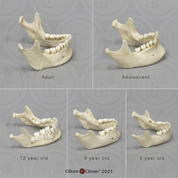 Human Jaw Set of 5
Human Jaw Set of 5 -
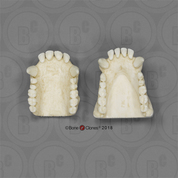 Chimpanzee Maxilla and Mandible, Male
Chimpanzee Maxilla and Mandible, Male -
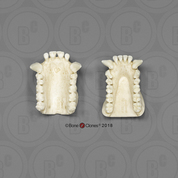 Western Lowland Gorilla Maxilla and Mandible, Male
Western Lowland Gorilla Maxilla and Mandible, Male -
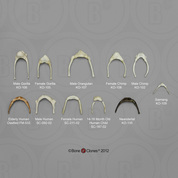 Set of 11 Primate Hyoids
Set of 11 Primate Hyoids -
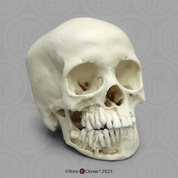 12-year-old Human Child Skull, with Dentition Exposed
12-year-old Human Child Skull, with Dentition Exposed -
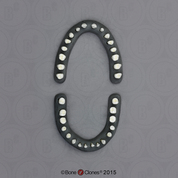 Set of 32 Human Adult Male Teeth on Base
Set of 32 Human Adult Male Teeth on Base -
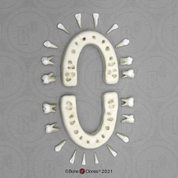 4-year-old Human Child Deciduous Teeth, Set of 20 (on base)
4-year-old Human Child Deciduous Teeth, Set of 20 (on base) -
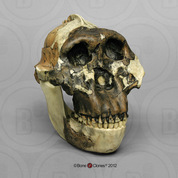 Australopithecus boisei Skull OH 5 (Zinjanthropus)
Australopithecus boisei Skull OH 5 (Zinjanthropus) -
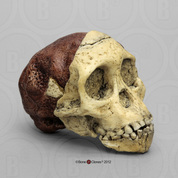 Australopithecus africanus Skull (Taung Child)
Australopithecus africanus Skull (Taung Child) -
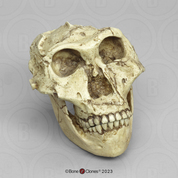 Australopithecus robustus Cranium SK-48 with Reconstructed Jaw
Australopithecus robustus Cranium SK-48 with Reconstructed Jaw -
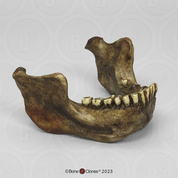 Homo heidelbergensis Mandible Mauer 1
Homo heidelbergensis Mandible Mauer 1 -
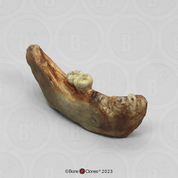 Denisovan Xiahe Mandible
Denisovan Xiahe Mandible
Newsletter Signup
9200 Eton Ave.
Chatsworth, CA 91311 USA
© 1992-2025 Bone Clones Holdings. All Rights Reserved.
Customer Service
© 2025 BONE CLONES HOLDINGS / Made by MEV




















